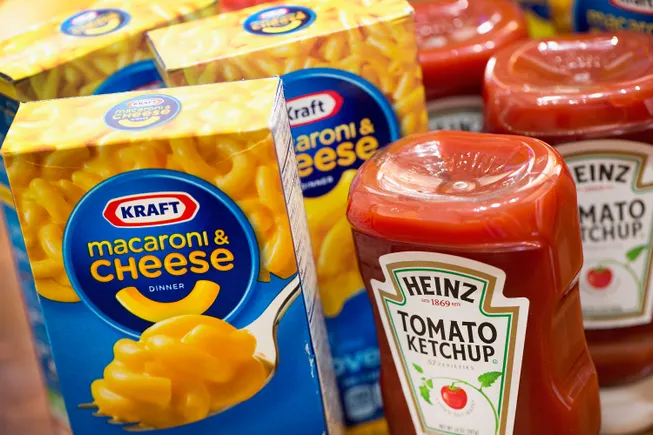Kraft Heinz Explores Strategic Options to Boost Sales
Kraft Heinz has announced that they are currently evaluating potential strategic transactions in an effort to reverse a decline in sales. The company, known for popular brands like ketchup and Lunchables, is looking to make changes to improve profitability and shareholder value.
CEO Carlos Abrams-Rivera stated, “Our goal at Kraft Heinz has always been to provide high-quality, delicious food for consumers while driving long-term growth and value creation. In line with this objective, we have been exploring strategic transactions to enhance shareholder value.”
Innovation and Portfolio Expansion
With net sales of $26 billion last year, Kraft Heinz has been focusing on innovating its product portfolio to achieve $2 billion in additional net sales by 2027. The company has been expanding its key brands into new and trendy categories, such as introducing Philadelphia cream cheese frosting and launching a Crystal Light hard seltzer line.
Despite these efforts, Kraft Heinz has experienced a decline in total revenue for six consecutive quarters. The company, which owns brands like Kool-Aid and Oscar Mayer, has projected a decline in organic sales for the fiscal year 2025.
Challenges in the Packaged Food Industry
Like many packaged food companies, Kraft Heinz has faced challenges from cash-strapped consumers reducing spending due to inflation. Additionally, changing consumer preferences towards healthier options have impacted product demand, leading to a shift in purchasing behavior.
Changes in Board Membership
On a related note, Kraft Heinz announced that Warren Buffett’s Berkshire Hathaway will no longer have seats on its board. Board members Timothy Kenesey and Alicia Knapp have stepped down due to their connections to Berkshire Hathaway, with the company clarifying that their departure was not due to any disagreements with management or the board.
Overall, Kraft Heinz continues to navigate the evolving landscape of the food industry, seeking strategic opportunities to drive growth and adapt to changing consumer preferences.

